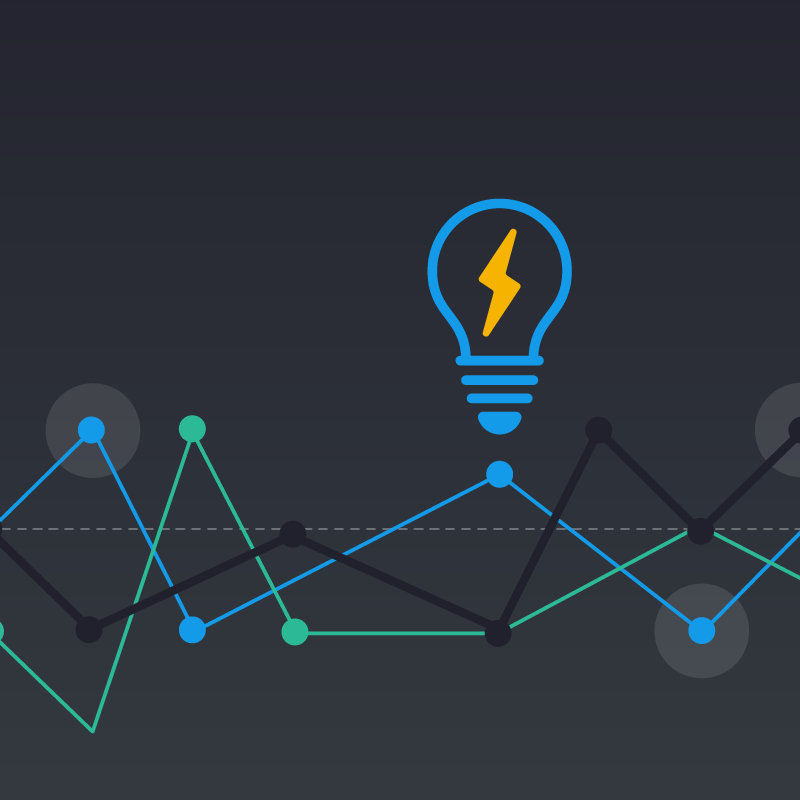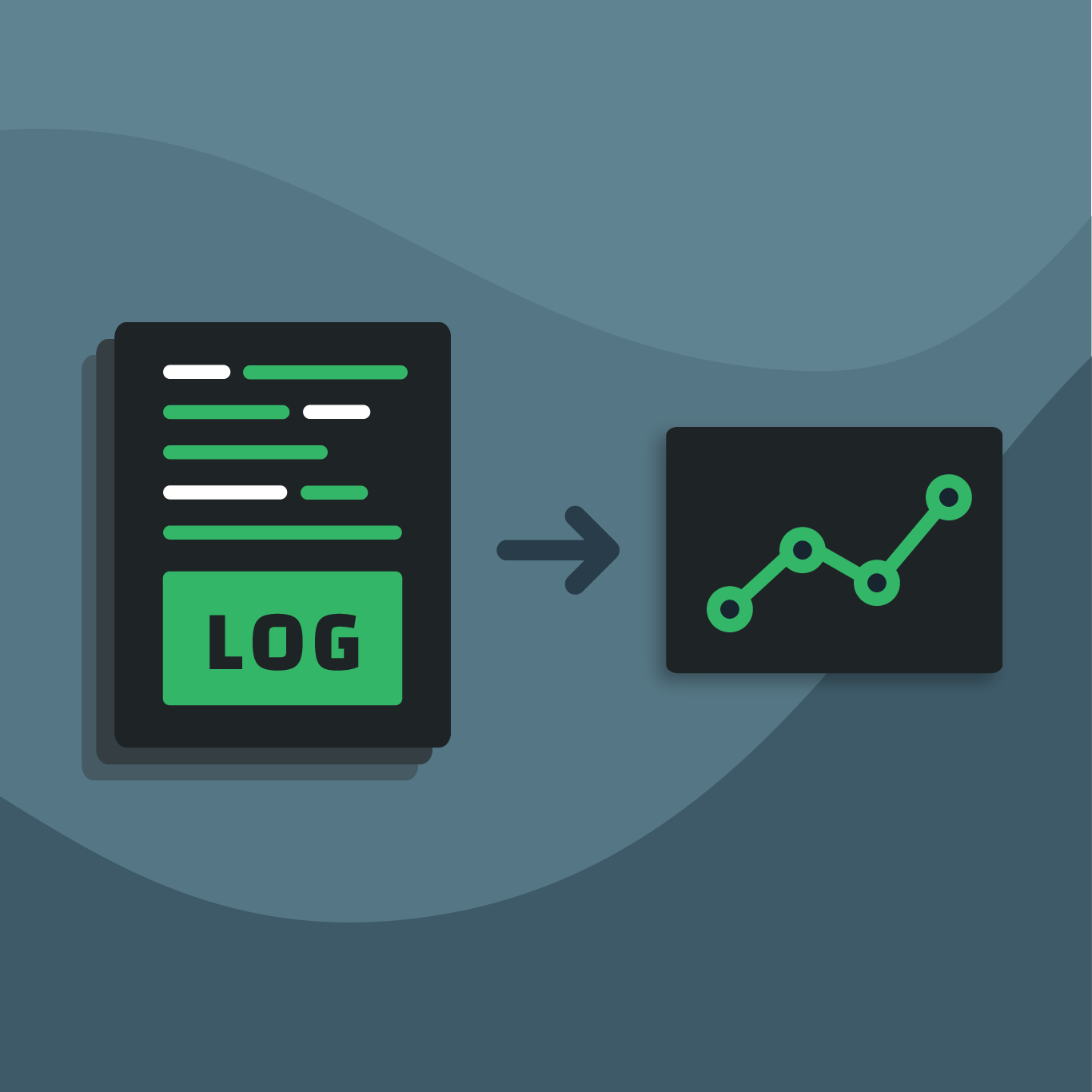Whether or not you’re familiar with time-series data, it has a significant impact on your life – and your business. If you aren’t using it, you’re missing out. If you are using it, you may not be getting the most out of it.
First things first, let’s define time-series data. Simply stated, it’s any series of data points recorded with accompanying time stamps, usually as a sequence recorded at equally spaced intervals. Typical business-related time-series data includes information like positioning data (flight paths, delivery routes), website visitors, or fluctuating prices (stocks, real estate, airline tickets).
Measuring your business data is just a start.
Measuring that data over time is truly eye-opening.
More so than other data, time-series data holds critical, insightful information that can help you make smarter business decisions. From today’s technology to tomorrow’s innovations, continuous, reliable data measured over time is incredibly valuable. Self-driving cars, live medical monitoring, Internet of Things (IoT), delivery routing, streaming devices and services – they all rely on the unique information time-series data provides. Over time, patterns are revealed, which enable better predictive technology – how your GPS app can predict traffic and provide multiple alternative routes; or how your smart home knows when to turn the lights on. Data kept over time also sets a baseline so anomalies can be immediately identified – and rectified.
In short, time-series data is everywhere, enabling you to understand buying habits, identify seasonal patterns and trend cycles (for a start). Leveraged properly, it’s critical to everything from driving predictive software on mobile devices to powering cutting-edge artificial intelligence.
What drives it all? Time-Series Databases (TSDBs).
TSDBs should definitely be a part of your business strategy.
If not, the clock is ticking.
What is a TSDB?
Collectively, Wikipedia defines TSDBs as “…systems that are optimized for handling time series data, arrays of numbers indexed by time.” But when you understand what this kind of information can empower, these databases are much more – in both how the data is collected, and how you can use it. This may all sound familiar, and at this point you may even be thinking, “we already have that.”
But, no, you probably don’t.
Even if you have a time field in your existing database (relational, noSQL, etc.), you can’t actually get all that data into your system “live.” It must be batched – stored all day and then delivered at night, for example – which eliminates many of the capabilities mentioned above.
What makes TSDBs different is how the data is collected and stored, as well as a fundamental shift in perspective – as time is seen as a primary axis. Technically speaking, a TSDB:
- Maintains a longer lifecycle of relevant time-series data, while downsampling less actionable data
- Is built to handle a much higher volume of records
- Isn’t hampered by relational restraints (ACID)
TSDBs are specifically optimized to measure change over time, and their data is always more valuable as a whole. That, in one line, is the game-changer. Optimally, an effective TSDB is both scalable and usable, so it should be:
- Highly available – you’re potentially dealing with billions of data points that all contribute to the whole. The use of consensus algorithms in distributed TSDBs can hinder their reliability
- Comprehensive – measure everything to empower future analysis, so you can “monitor all the things”
- Limitless – in terms of how often data is collected so you can spot even the most minute change
- Kept indefinitely – you never know when historical data can show how seasonality impacts your business – if you are constantly forced to delete data because of escalating storage costs, you might miss a key insight to maximize your business
TSDBs in the Real World?
Right now, the information and insights contained within a reliable TSDB empower critical (and familiar) business decisions, such as:
- Adjustments to factory/warehouse temperature spikes (data collected includes assembly line load, speed and efficiency, temperature and HVAC system information, all captured minute-by-minute)
- Predicting market fluctuations (real-time and seasonal sales data)
- Planning production and inventory (fuel, warehouse, shipping/logistics, and historical sales data)
- Tracking and monitoring volume of activity in streaming music plays (real-time streaming usage data)
- Working around traffic delays or known bottlenecks (historical and real-time satellite and traffic data)
- Monitoring dynamic infrastructures and applying custom queries to data
Today, TSDBs are already being used to drive machine learning and AI, take advantage of the proliferation and ubiquity of IoT devices and sensors, and get real-time feedback on streaming media — so you can make content changes on the fly in reaction to/anticipation of audience interaction with programming. In short, TSDBs unlock the limitless potential of your time-series data – providing a unique, highly informative view of almost every aspect of your business.
Introducing IRONdb
To help businesses like yours make the most of TSBDs today and tomorrow, Circonus has introduced IRONdb. Built to empower your business decisions with meaningful insight, IRONdb unifies storage and analytics, provides next-generation monitoring, delivers automatic downsampling, and can scale on-the-fly to meet your evolving needs.
IRONdb Is truly “set it and forget it.” Data points over X age are automatically rolled up. Once those less actionable sample points are over Y age, they are rolled up again. And so on.
IRONdb’s performant and scalable architecture enables you to capture and organize billions of measurements per second to answer a rich set of queries effectively. In addition to making the collection and measurement of time-series easier than ever, IRONdb also offers tools and dashboards to help with forecasting, manufacturing, and machine learning. We understand that for as powerful as TSDBs are for your business case, they can be just as complicated to deal with. So, we’ve put just as much thought into the user experience as we have into the tech behind the scenes.
With IRONdb, you’re not starting from scratch, either. It integrates seamlessly with Graphite and Grafana installations, which frees up resources and saves you from the hassles of installation downtime.
In Summary
As you’ve started to see, time-series data is a vital part of your decision making for today and tomorrow. Depending on your specific use case, this data offers some obvious and not-so-obvious benefits that all lead to better-informed decisions for your business, as well as the flexibility to empower future monitoring and analysis needs you haven’t even thought of yet. Still not convinced? At this moment, there’s already a lot of present (and future) tech that utilizes time-series data as a critical component in delivering better business outcomes, including:
- Self-driving cars: Capturing and monitoring mechanical diagnostics based on load and wear, real-time traffic information, fuel and battery usage, distance and environmental measurements. These can all be used, for example, to estimate the vehicle’s lifespan, determine how long a “shift” should be between maintenance and refueling, and enable smarter performance predictions.
- Live medical monitoring: We’re already seeing this in devices like the Series 4 Apple Watch, which can automatically capture vital information like heart rate and blood pressure and map it to specific parts of the day to help physicians in both diagnosis and treatment plans.
- Internet of Things (IoT): Empowering the smart home/office movement, with many devices including predictive actions based on usage patterns captured as time-series data (lights, water, opening and closing of doors, foot traffic). This includes powering on/off HVAC systems, activating security lights and cameras at certain times of day, or even sending notifications about restocking the office refrigerator.
- Streaming devices and services: Usage data captured as a time-series helps streaming services to predict and manage their server load based on time of day and time zone to ensure better performance for individual customers.
In fact, you’re probably contributing to time-series data as we speak – it’s all around us. For business, the possibilities are limitless, and that’s where a solid TSDB comes in. The better your TSDB (and the tools to access and analyze it), the smarter each of your business decisions becomes. But how do you choose the right TSDB? Simply put, the best TSDB is available, scalable, easily usable, and specifically optimized to measure change over time.
Time-series data is critical to your business.
So is unlocking its potential with the right Time-Series Database.
Circonus uses time-series data to help IT leaders make critical decisions and drive better business outcomes. Through our massively scalable time-series database, IRONdb, we enable organizations to ingest and measure vast amounts of real-time data, with efficient, fault tolerant time-series storage for environments of all sizes.
Furthermore, the Circonus platform not only seamlessly integrates with your existing data installation, it makes sense of your newly visible time-series data through user-friendly graphs, dashboards and alerts that uncover hidden insights.
Now that you are up-to-speed on the basics of what TSDBs (and Circonus) can do for you, I invite you to take the deep dive with our white paper, “Monitoring in a DevOps World.” In it, Theo Schlossnagle discusses the need for continuous monitoring; how machine learning and AI can be used to improve process and design; and the characteristics of successful time-series data monitoring.
It’s worth every bit of your time.
Circonus provides Big Data analytics and monitoring for Web-Scale IT. Developed specifically for the requirements of DevOps, the Circonus platform delivers alerts, graphs, dashboards and machine-learning intelligence that help to optimize not just your operations, but also your business. Proprietary Big Data technology and IT Operations Analytics tools enable Circonus to provide forensic, predictive, and automated analytics capabilities that no other product can match, and at a scale that other products can only dream of.



